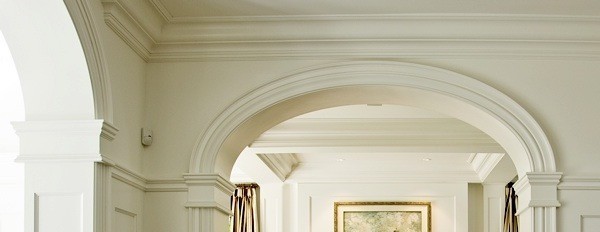Welcome to the world of flexible decorative molding! As someone who has renovated multiple homes, I can attest to the transformative power of molding. This guide will explore flexible decorative molding’s benefits, applications, and installation, while sprinkling in personal anecdotes to help illustrate its value.
What is Flexible Decorative Molding?
Flexible decorative molding is a versatile design element that can be used in various architectural styles. Unlike traditional rigid molding, flexible molding can bend and twist around curves and irregular surfaces, making it perfect for unique designs.
Common Materials Used
Flexible molding can be crafted from a variety of materials, including:
- Polyurethane
- Polyvinyl chloride (PVC)
- Wood
- Foam
Benefits of Flexible Decorative Molding
Choosing flexible decorative molding for your project comes with a host of benefits:
1. Versatility
The most significant advantage is its versatility. It can fit into various design aesthetics and work in challenging spaces where traditional molding cannot.
2. Ease of Installation
Flexible molding is lighter and easier to install than many traditional counterparts, reducing labor costs and speeding up the overall process.
3. Cost-Effectiveness
While flexible molding can appear slightly more expensive initially, its ease of installation and long-lasting nature often make it a cost-effective choice.
4. Aesthetic Appeal
Flexible molding can add a sophisticated touch to any room, complementing your home’s unique architecture.
Applications of Flexible Decorative Molding
Flexible decorative molding can be used in a variety of applications:
1. Ceilings
Enhance the visual appeal of your ceilings by using flexible crown molding to create offset designs.
2. Archways
It’s perfect for rounded archways, providing a seamless transition from one room to another.
3. Custom Furniture
Use flexible molding to add custom touches to furniture pieces, giving them a unique flair.
4. Walls
Create eye-catching wainscoting or chair rails using flexible molding, adapting to the contours of your walls.
Installation Tips for Flexible Decorative Molding
Installing flexible decorative molding can be straightforward if you follow these tips:
1. Measurement
Accurate measurements are crucial. Measure the area where you plan to install the molding to ensure a perfect fit.
2. Using the Right Adhesive
Select an adhesive that works well with the materials you are using for the molding. Many users prefer caulk or construction adhesive for flexible molding.
3. Cutting Techniques
Utilize a miter saw for clean cuts. For curves, a hand saw can come in handy for greater control.
4. Finishing Touches
Don’t forget to fill any gaps with caulk and paint or stain your molding to match your decor.
Pros and Cons of Flexible Decorative Molding
| Pros | Cons |
|---|---|
| Easy to install | Can be more expensive than traditional molding |
| Lightweight and versatile | Can be less durable than some materials |
| Adaptable to various designs | Limited options in specific materials |
| Enhances aesthetics | Requires skilled installation for complex designs |

Flexible Decorative Molding vs. Traditional Molding
When considering molding options, it’s essential to understand the differences:
| Feature | Flexible Molding | Traditional Molding |
|---|---|---|
| Material Variety | Polyurethane, PVC, Foam | Plaster, Wood |
| Curvature | Can bend around curves | Rigid, not suitable for curves |
| Weight | Lightweight | Heavy |
| Installation | Ease of installation | Requires skilled labor |
Personal Experience: A Transformation Story
A few years ago, I decided to renovate a small, outdated bathroom in my home. The curved walls made it difficult to find suitable molding until I discovered flexible decorative molding. The installation process was straightforward and significantly transformed the space, giving it a modern yet classic feel. I was amazed at how something so simple could have such a dramatic impact.

FAQs About Flexible Decorative Molding
What types of flexible decorative molding are available?
Flexible molding comes in various styles, including crown, base, and chair rail molding. You can also find decorative accents and trims.
Can I paint flexible decorative molding?
Yes, most flexible moldings can be painted. Ensure they are clean and dry before applying paint for the best results.

Is flexible molding durable?
Flexible moldings are generally durable, especially when made from quality materials like polyurethane, though care should be taken to avoid damage from extreme impacts.
How do I clean flexible decorative molding?
Wipe them down with a damp cloth and mild detergent. Avoid abrasive cleaners which can damage the finish.

Can I use flexible molding outdoors?
Certain flexible moldings are suitable for outdoor use, but always check the manufacturer’s recommendations for durability against the elements.